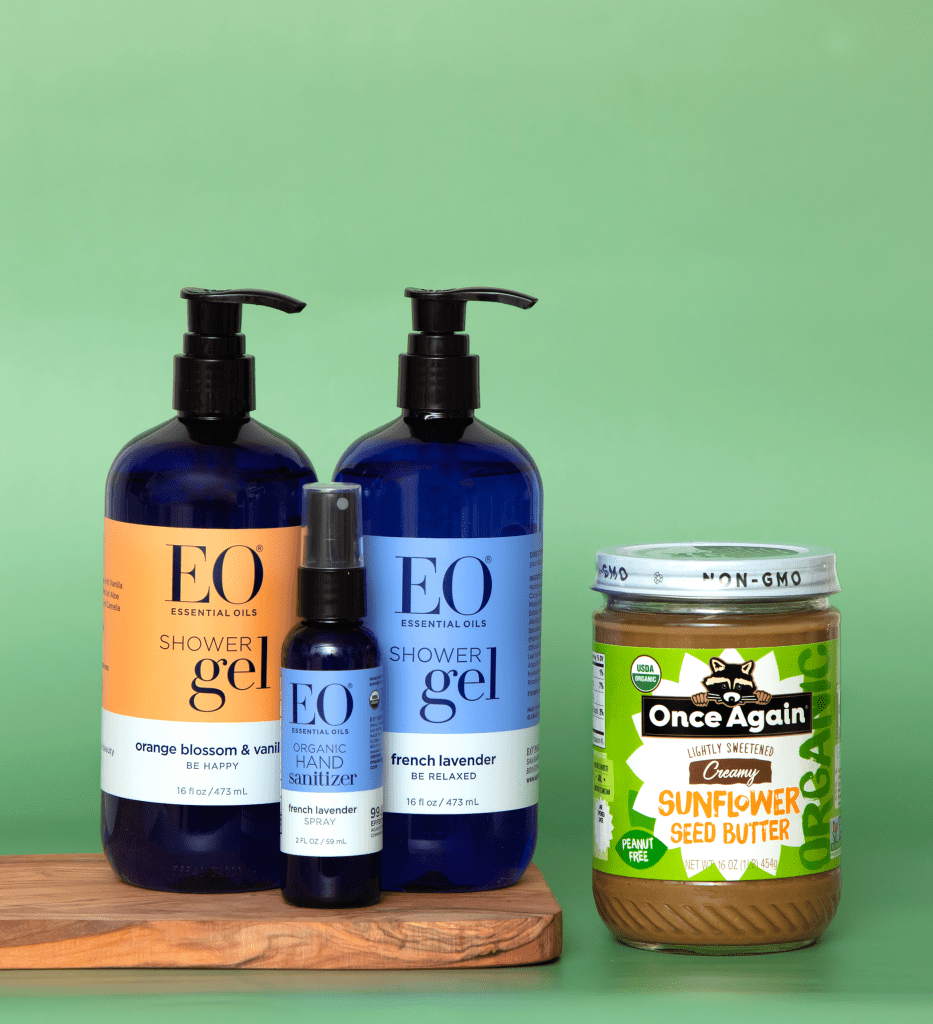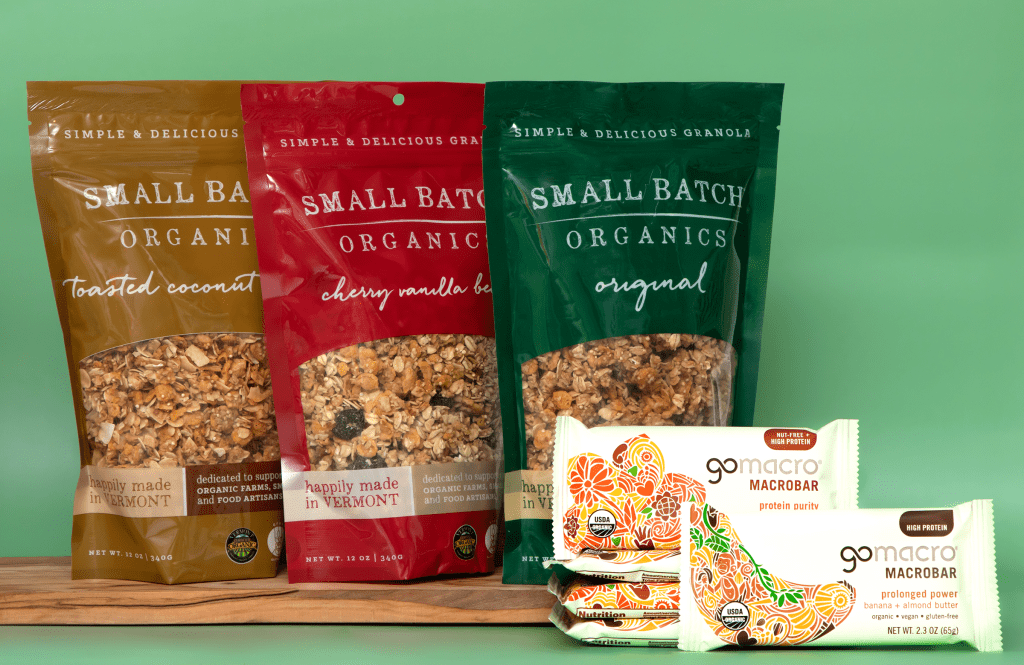Styling and Photography by Laurie Mosco
For 2022, health is still a customer focus, but it’s moved from personal health, to the health of the planet. Supporting environmental health is the number one food trend identified by market intelligence company, Innova Market Insights (Food & Beverage Insider). Today, sustainably-sourced products are hot items, with 55% of consumers worldwide more likely to purchase a product with a sustainability claim (Grocery Dive). A key ingredient to sustained increased sales in 2022 — upping your sustainable brand offerings.
Spotting sustainability isn’t as hard as you might think. Read on for the different ways brands are focusing on sustainability.
Sustainability Through Ingredient Sourcing

When it comes to their search for the sustainable, 63% of consumers look for products labeled, “sustainably sourced,” or “responsibly sourced” (Grocery Dive). This claim conveys that the brand has put measures and inspections in place throughout the supply chain to ensure that ingredients have low to no negative impact. This includes minimal impact to the environment and social and economic impact for the farmers growing the ingredients.
If we’re talking about coffee or chocolate products, this designation is “Fair Trade”, but for other foods, it can be hard to identify sustainability at first sight. Not all information on a brand’s sustainability practices can be immediately found the packaging. When in doubt. ask your sales rep for this information, or simply visit the product’s company webpage. Those who put in the time and effort to create a sustainably sourced product aren’t shy about highlighting this information.
Look for brands that give details about where their ingredients are sourced, or better yet, their own stringent in-house developed social and environmental standards like Once Again nut butters. The Once Again brand is able to trace all ingredients and raw materials used in their final product, checking for positive social and environmental impact.
For others, sustainability goes beyond simply controlling the source of their ingredients, to making sustainability a driving force in every aspect of the business like EO Essential Oils health and beauty products. EO reports 0% waste manufacturing, in addition to boasting a B Corp Certification. This certification shows the company has verified performance, accountability, and transparency on factors from employee benefits and charitable giving to supply chain practices.
Sustainability Through Conservation Efforts

Some brands manage sustainability by using their profits and notoriety to support the renewal of natural resources. Consumers feel good when they know that their purchase is helping the environment. In fact, 49% of consumers seek “conservation of natural resources” mentioned on packaging (Grocery Dive).
Back to Nature’s plant-based cookies and crackers taste even better when customers know they’re supporting the global non-profit, The Nature Conservancy, and their goal to plant a billion trees. Back to Nature also includes information about The Nature Conservancy on every package, which is hard to miss, and further entices consumers to purchase (as if the tasty snacks weren’t enticing enough).
Other brands contribute to the environmental and social betterment of the planet by supporting local causes like Everyone family-friendly health and beauty products. The company makes financial contributions as well as donations of its health and beauty products to local non-profits, while also encouraging their employees to volunteer. Feel good brands leave a lasting impression in the mind of the customer.
Sustainability Through Reducing Carbon Footprint

42% of consumers think their food choices have a moderate or significant impact on the environment (Food Insight), so they’re looking for brands that have reduced waste, and reduced use of non-renewable energy.
Brands like GoMacro that create their plant-based wholesome energy bar using 100% renewable wind and solar energy will have customers walking on sunshine.
Another way a brand can reduce their carbon footprint is by sourcing and supporting local. Getting items locally = less fuels used to transport items. Granola is already viewed as a “feel good” food, but consumers can feel even more “hippie granola” vibes about Vermont-based Small Batch Granola. They use locally-sourced maple chips from Mount Mansfield Maple, and Maple syrup from Beebe Family Sugarbush in their granola.
The sustainability, Earth-friendly, eco-conscious trend isn’t going anywhere any time soon, so expect to see these callouts on product packaging for the foreseeable future and know your customers are going out of their way to support these brands.
We have the sustainable brands they’re seeking

Hi! Let us know what's on your mind.